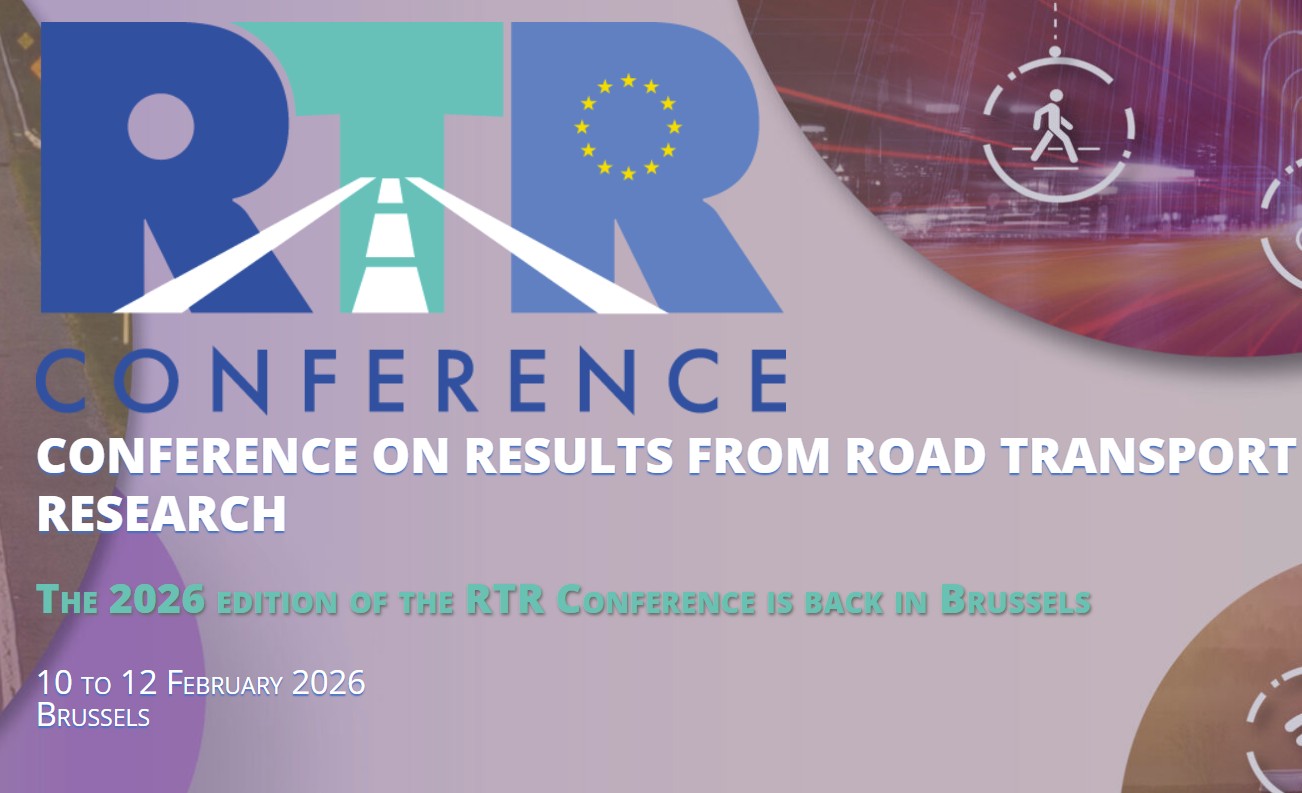Author: Eva Michelaraki
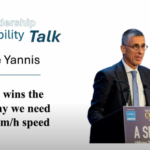
At a recent podcast in 4NewMobility Leadership Talk, NTUA Professor George Yannis provided a technical conversation, hosted by Astrid Rohles, about 30 km/h speed zones which turned into something much bigger: a vision for healthier, safer and more human cities. He emphasized that speeding remains the norm in urban mobility, endangering lives, discouraging active travel and fueling pollution. From empirical results across 17 European cities to his personal 30 Marathons in 30 months campaign, Prof. Yannis made a passionate and data-driven case for a European-wide roll-out of this low-cost, high-impact measure.




The solution? A coordinated European approach:
- Make 30 km/h the default in urban areas
- Support cities with infrastructure redesign
- Pair soft nudges with smart enforcement
- Communicate, measure and repeat

The new Greek Road Traffic Code introduces city-wide 30 km/h speed limit in all urban streets of one or two directions with a single lane per direction, making Greece the second EU country after Spain to implement such a measure. A bold move of the Greek Government towards a new road safety culture, with a brand-new Road Traffic Code 


 with the active contribution of National Technical University of Athens:
with the active contribution of National Technical University of Athens:
- rationalising and simplifying penalties, linking them to offences’ seriousness & magnitude,
- punishing drivers instead of vehicles, especially recidivists,
- introducing two-wheelers filtering & advance stopping zones,
- expanding calm driving with city-wide 30km/h speed limits,
- and getting ready for wide deployment of cameras and fines digital management.
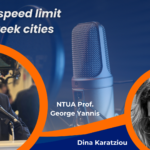
At a recent podcast in Lifo, NTUA Professor George Yannis is decoding the new Greek Road Code proposal for 30km/h speed limit in all cities in Greece, the great opportunity for a new safe and sustainable mobility culture. Drawing from extensive European data and simulation studies, he pointed out that city-wide 30km/h speed limit is the since-long waited single road safety measure with such a significant benefit at such a low cost. The myth that lower speed limits significantly delay travel times was refuted by evidence showing only negligible differences and even mid-term traffic improvement. The innovative and impactful NTUA campaign of 30 Marathons in 30 months, implemented by Prof. Yannis, to actively promote the adoption of 30km/h speed limit in all cities worldwide was also highlighted. Full article and related audio-podcast are now available. 


The National Technical University of Athens has recently released a Guide for Safe Driving providing practical advice for drivers and riders in order to prevent key crash causes: speeding, seat-belt, helmet, mobile phone use, drink-and-drive, fatigue and adverse weather conditions. This Guide suggests summary knowledge on these key crash risk factors together with highly useful recommendations in order to promote safe driving behaviour and develop a continuously improving road safety culture. 



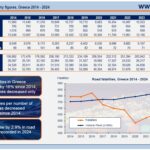
Road fatalities in Greece in 2024 presented a slight increase (3%) compared to 2023 figures, according to the provisional ELSTAT data, bringing Greece at the 25th position out of 27 EU countries (better only than Bulgaria and Romania). These results demonstrate that Greece is well out of track to achieve the targets set neither for 2025 (-25%) nor for 2030 (-50%) and highlight that there is an urgent need for extra effort to further improve road safety in the Greek roads, with systematic actions from the Authorities and serious engagement from the society. 

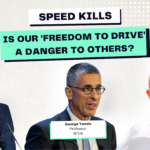
The Y-Mobility latest Conversations in the Park podcast episode “Speed Kills: Is Our ‘Freedom to Drive’ a Danger to Others?” explores the contentious relationship between personal driving freedom and public safety with three global experts in transportation safety and technology willing to say what others won’t: George Yannis, Nick Reed and David Fidalgo, hosted by Timothy Papandreou. Quick reality check:





- More road deaths than all wars combined
- Your SUV? It’s part of the problem
- That 30 km/h limit you hate? It’s saving lives
- Your “excellent driving skills”? That’s part of the problem too
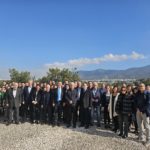
The New Year Event of the Department of Transportation Planning and Engineering took place with great success on Tuesday, January 28th, 2025, with the participation of more than 80 members of the Department and the School of Civil Engineering. During the Event, the Director of the DTPE, George Yannis presented the 2024 Annual Report of the educational, research and scientific work of the Department. The Vice Rector of Finance, Infrastructure and Development, Nikolaos Lagaros and the Dean of the School of Civil Engineering, Eleni Vlachogianni addressed the Event. 
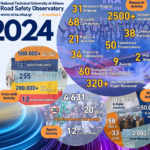
The 2024 infographic of NTUA Road Safety Observatory (www.nrso.ntua.gr) highlights one more very intensive and highly fruitful year. The nrso scientific team with high dedication, efficiency and expertise continues to grow and excel, being active in 31 innovative research projects, succeeded to publish 55 scientific papers (21 in peer reviewed journals), and travelled around the world in hundreds of meetings to develop and promote road safety science. The 30 Marathons campaign for promoting 30km/h city-wide speed limit was also successfully completed, contributing actively to the culture of calm and safe streets everywhere and for all. 
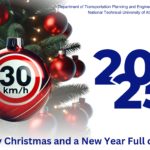
This year we followed our dreams, promoting intensively road safety scientific excellence and safer mobility everywhere and for all, including also our major campaign for city-wide 30km/h speed limits; the new catalyzer for saving so many lives with so little change in our habits.
At mid-way to the decade -50% target, we need to further strengthen our individual and collective efforts to sincerely include traffic safety into the mobility agenda and persist in implementing the vision zero traffic fatalities.
We thank you all for the excellent cooperation and we are sending you our very best wishes for Merry Christmas and a Very Lucky New Year, full of personal and professional achievements. ![]()

At a recent “Travelling Differently Podcast“, NTUA Professor George Yannis emphasized the necessity of city-wide 30km/h speed limits, highlighting significant safety benefits. He referred to several analyses data demonstrating that European cities implementing this measure have achieved an average 37% reduction in road fatalities. The importance of protecting vulnerable road users was highlighted, noting that the 30km/h speeds limits not only enhance road safety but also promotes walking, cycling and public transport. The need for a shift from policy intentions to concrete actions was emphasized, with focus on the role of Authorities in driving societal change. Professor George Yannis also pointed to the over-dependence on private cars in Greece, describing urban roads as “passenger car warehouses”. Particular emphasis should be given on the need to reimagine urban mobility, with the city-wide 30km/h speed limit identified as a unique pivotal measure for fostering safer and more sustainable cities. The full article and the related audio-podcast are now available. 


NTUA Professor George Yannis has successfully completed his challenge to run 30 Marathons in 30 months in order to actively promote the 30km/h speed limit in cities. He has finished all marathons in under 4 hours. This campaign has a particularly significant social impact, with over 400,000 views and 100,000 visitors per year at the website and social media. It also received wide publicity with dozens of interviews on TV, radio and online media and dozens of articles in newspapers and publications in scientific journals and conferences, with the active support of NTUA and all major International Road Safety and mobility Organizations (ETSC, ECTRI, UITP, POLIS, ERF, IRF, FERSI, FEHRL, ECF, WALK21 and HITE).
- Campaign Website: georgeruns30x30.com
- Short Video Documentary:

- Social Impact Infographic:

- Marathons Experiences:

- Marathons Photos:

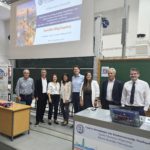
Eva Michelaraki has successfully defended her PhD dissertation titled: Improving driver safety tolerance zone through holistic analysis of road, vehicle and behavioural risk factors, under the supervision of NTUA Prof. George Yannis. Data from 190 drivers who participated in a large on-road and simulator driving experiment were exploited. An innovative methodology, consisting of both statistical analyses (Generalized Linear Models, Structural Equation Models) and machine learning techniques (Decision Trees, k-Nearest Neighbors, Neural Networks and Random Forests) was implemented. Results indicated that RF models outperformed the DT and kNN models across all metrics, making them the most effective for predicting speeding and headway, with overall accuracy up to 90%. It was also revealed that task complexity was positively correlated with risk, while coping capacity was negatively correlated with risk, indicating that drivers with higher coping capacity are better equipped to handle challenging driving situations. 


In a recently published study conducted at Stanford University (USA), using a range of parameters for each scientist’s research contribution and influence, million scientists data from Scopus database were analysed. According to this study 1,019 Greek scientists are contained in the global top 2%, among which 159 researchers from the National Technical University of Athens (NTUA). 25 Professors from the School of Civil Engineering of NTUA are among the top 2% researchers in the world (4 within the top-ten of NTUA), while 7 of them from the Department of Transportation Planning and Engineering, (5 within the top-ten of the School of Civil Engineering). 

The European Commission and the An Roinn Iompair (ARI) together with the European Transport Research Platforms ACARE, ALICE, CEDR, ECTP, ERRAC, ERTRAC, ETRA and Waterborne organised with great success the Transport Research Arena Conference (TRA2024) which took place in Dublin, Ireland, on 15-18 April 2024. The pillars of the Conference were the safe & inclusive transport, the sustainable mobility of people and goods, the efficient & resilient systems and the collaborative digitalisation regarding the European Transport Research and Innovation and the cooperation of Europe with other continents. 
 NTUA actively contributed with 35 innovative presentations:
NTUA actively contributed with 35 innovative presentations:
 European Road Safety Observatory
European Road Safety Observatory
 Road safety in Low- and Middle-Income Countries – Analysis and recommendations
Road safety in Low- and Middle-Income Countries – Analysis and recommendations

 Monitoring National Road Safety Strategies in the EU
Monitoring National Road Safety Strategies in the EU
 Naturalistic Spatial Road Safety Analysis: The SmartMaps Project
Naturalistic Spatial Road Safety Analysis: The SmartMaps Project
 Traffic simulation and safety assessment requirements for enhancing road safety prediction tools
Traffic simulation and safety assessment requirements for enhancing road safety prediction tools
 Bicycle traffic analysis before and after mobility interventions using crowdsourced data
Bicycle traffic analysis before and after mobility interventions using crowdsourced data
 Assessing the Impact of Athens Great Walk on VRU Volumes: A Temporal Analysis
Assessing the Impact of Athens Great Walk on VRU Volumes: A Temporal Analysis
 The HADRIAN Novel Human-Machine Interface Prototype for Automated Driving: Safety and Impact Assessment
The HADRIAN Novel Human-Machine Interface Prototype for Automated Driving: Safety and Impact Assessment
 Safety evaluation via conflict classification during automated shuttle bus service operations
Safety evaluation via conflict classification during automated shuttle bus service operations
 Outcome Evaluation of i-Dreams (H2020 Project) Interventions: Comparison of Multi-Country Driving Behavior
Outcome Evaluation of i-Dreams (H2020 Project) Interventions: Comparison of Multi-Country Driving Behavior
 Unveiling driving behaviour patterns during a naturalistic driving experiment
Unveiling driving behaviour patterns during a naturalistic driving experiment
 Investigating the effect of driver-vehicle-environment interaction with risk through naturalistic driving data
Investigating the effect of driver-vehicle-environment interaction with risk through naturalistic driving data
 Predicting risky driving behavior with classification algorithms: Results from a large-scale filed-trial and simulator experiment
Predicting risky driving behavior with classification algorithms: Results from a large-scale filed-trial and simulator experiment
 Unfolding the dynamics of driving behavior: A machine learning analysis from Germany and Belgium
Unfolding the dynamics of driving behavior: A machine learning analysis from Germany and Belgium
 Investigating the Influence of Mobile Phone Use on Driving Behaviour with Machine Learning Analysis
Investigating the Influence of Mobile Phone Use on Driving Behaviour with Machine Learning Analysis
 Exploitation of naturalistic driving data to estimate crash risk through machine learning techniques
Exploitation of naturalistic driving data to estimate crash risk through machine learning techniques
 Examining the influence of traffic enforcement on the development of traffic safety culture
Examining the influence of traffic enforcement on the development of traffic safety culture
 Analyzing Acceptance of Reduced Speed Limits on Greek Motorways
Analyzing Acceptance of Reduced Speed Limits on Greek Motorways
 Economic Assessment of Free Public Transport in Athens
Economic Assessment of Free Public Transport in Athens
 Examining the impact of driver distraction on speeding through the exploitation of smartphone sensor data
Examining the impact of driver distraction on speeding through the exploitation of smartphone sensor data
 Impact assessment of governance models on the integration of connected and autonomous vehicles
Impact assessment of governance models on the integration of connected and autonomous vehicles
 Assessing the Readiness of European Cities for Distributed Traffic Management: A Smart Infrastructure Readiness Index
Assessing the Readiness of European Cities for Distributed Traffic Management: A Smart Infrastructure Readiness Index
 Does Eco-Routing Even Work? Some Experimental Findings
Does Eco-Routing Even Work? Some Experimental Findings
 Using the Analytical Hierarchy Process (AHP) to Prioritize Network Benefits When Applying Novel Traffic Management Strategies
Using the Analytical Hierarchy Process (AHP) to Prioritize Network Benefits When Applying Novel Traffic Management Strategies
 Comparing Random Forests and Multinomial Logit Models for Urban Travel Choice under Innovative Traffic Management Strategies
Comparing Random Forests and Multinomial Logit Models for Urban Travel Choice under Innovative Traffic Management Strategies E-Survey of Road Users’ Attitudes
E-Survey of Road Users’ Attitudes Optimising driver behaviour for safe, green and energy efficient mobility
Optimising driver behaviour for safe, green and energy efficient mobility Injury Mitigation to Promote Vision-Zero Achievement
Injury Mitigation to Promote Vision-Zero Achievement CulturalRoad: Cultural, regional and societal factors to overcome barriers to connected, cooperative and automated mobility deployment
CulturalRoad: Cultural, regional and societal factors to overcome barriers to connected, cooperative and automated mobility deployment SHOW simulation suite: A guide for simulating shared automated mobility
SHOW simulation suite: A guide for simulating shared automated mobility metaCCAZE – Flexibly adapted MetaInnovations, use cases, collaborative business and governance models to accelerate shared Zero Emission mobility for passengers and freight
metaCCAZE – Flexibly adapted MetaInnovations, use cases, collaborative business and governance models to accelerate shared Zero Emission mobility for passengers and freight Flexibly adapted MetaInnovations, use cases, collaborative business and governance models to accelerate shared Zero Emission mobility for passengers and freight
Flexibly adapted MetaInnovations, use cases, collaborative business and governance models to accelerate shared Zero Emission mobility for passengers and freight Artificial Intelligence for Vision Zero in Road Safety
Artificial Intelligence for Vision Zero in Road Safety Integration of road user behavior models to traffic safety analytic tools
Integration of road user behavior models to traffic safety analytic tools Artificial Intelligence boosting Road Safety
Artificial Intelligence boosting Road Safety
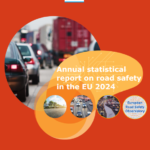
The European Commission with the active contribution of NTUA, SWOV and KFV has published at the European Road Safety Observatory, the Annual Statistical Report on road safety in the EU, which provides an overview of crash data for 2012 to 2022 from 27 EU Member States and the four EFTA countries. According to this Report, 52% of road traffic fatalities occurred on rural roads, versus 38% in urban areas and 9% on motorways. It was also revealed that car occupants (drivers and passengers) represented 45% of all fatalities, while pedestrians accounted for 18%, users of powered two-wheelers (motorbikes and mopeds) 19%, and cyclists 10%. 



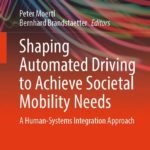
A book titled “Shaping Automated Driving to Achieve Societal Mobility Needs: A Human-Systems Integration Approach” was recently published under the framework of the Horizon 2020 project HADRIAN (Holistic Approach for Driver Role Integration and Automation Allocation for European Mobility Needs). This book describes novel human-systems integration approaches to improve acceptance, safety, and comfort of automated vehicles. Each chapter offers timely and practice-oriented information concerning the different aspects in the development of automated driving systems which adapt to the users’ needs.  NTUA actively contributed with the following chapters:
NTUA actively contributed with the following chapters:
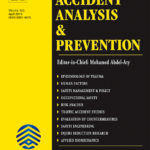
A paper titled “Network-wide road crash risk screening: A new framework” authored by Michela Bonera, Benedetto Barabino, George Yannis and Giulio Maternini has been published in Accident Analysis & Prevention. This study integrates road safety factors, prediction models and a risk-based method. Road segments are ranked according to the risk value and classified by a five-level scale, to show the parts of road network with the highest crash risk. This framework introduces a valid support for road safety Authorities to help identify the most critical road segments on the network, prioritise interventions and, possibly, improve the safety performance. 
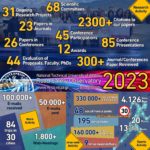
The 2023 infographic of NTUA Road Safety Observatory (www.nrso.ntua.gr) highlights one more very intensive and highly fruitful year. The nrso scientific team with high dedication, efficiency and expertise continues to grow and excel, being active in 31 innovative research projects, succeeded to publish 49 scientific papers (23 in peer reviewed journals), and travelled around the world in hundreds of meetings to develop and promote road safety science. The 30 Marathons campaign for promoting 30km/h city-wide speed limit was also widely welcomed, contributing to the culture of calm and safe streets everywhere and for all. 

The Transportation Research Board (TRB) organised with great success the 103rd Annual Meeting, which was held in Washington DC, on 7-11 January 2024. More than 600 workshops and sessions took place, covering all transportation modes and quite a few of them focussed on theory and practice of road safety worldwide.  NTUA actively contributed with the following presentations and posters:
NTUA actively contributed with the following presentations and posters:
-
 Network-wide Road Safety Assessment: Methodology of the European Union
Network-wide Road Safety Assessment: Methodology of the European Union -
 Interactions between road environment and driver state for the identification of safety critical conditions
Interactions between road environment and driver state for the identification of safety critical conditions 
 Identifying the impact of Task Complexity and Coping Capacity on Driving Risk – Comparison among Different Countries and Transport Modes
Identifying the impact of Task Complexity and Coping Capacity on Driving Risk – Comparison among Different Countries and Transport Modes-
 Leveraging Machine Learning Algorithms to Predict and Analyze Single-Vehicle and Multi-Vehicle Crash Occurrences on Motorways
Leveraging Machine Learning Algorithms to Predict and Analyze Single-Vehicle and Multi-Vehicle Crash Occurrences on Motorways
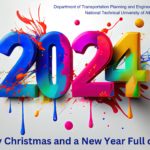
Getting into 2024, we steadily progress in our scientific excellence quests with persistence, dedication and passion to promoting evidence based safe mobility everywhere and for all. For reaching the decade -50% target we need to further strengthen our individual and collective efforts to sincerely include traffic safety into the mobility agenda and start implementing the vision zero traffic fatalities.
We thank you all for the excellent cooperation and we are sending you our very best wishes for Merry Christmas and a Joyful New Year, full of personal and professional achievements. ![]()

Several cities worldwide have started setting speed limits of 30 km/h in large parts of the city. Brussels, Paris and Vienna have introduced city-wide 30km/h speed limits, mixing safely traffic of pedestrians, cyclists and motorised vehicles, with significant results in reducing road crashes, emissions and noise and upgrading city liveability. Within the 30 Marathons in 30 months campaign-challenge of Prof. George Yannis, a comprehensive set of resources on cities experiences with 30km/h speed limit is made available: georgeruns30x30.com/resources

The NRSO campaign for the promotion of city-wide 30km/h speed limit in all cities by running 30 Marathons in 30 months by Prof. George Yannis has received wide publicity in the tv, the radio, newspapers, magazines and the social media, as well as in scientific journals, conferences and workshops, with the active support of the NTUA and several International Organisations (ETSC, ECTRI, UITP, POLIS, ERF, IRF, FERSI, FEHRL, ECF, WALK21). This campaign has a particularly significant social impact, as depicted by international findings, demonstrating an average 37% reduction in fatalities in road crashes in cities which have adopted the 30km/h speed limit, together with significant environmental, energy and health benefits. All these media interventions are available at: https://georgeruns30x30.com/media

The International Road Traffic Safety Analysis and Data (IRTAD) Group and of the International Transport Forum (ITF) organised with great success the 36th Meeting which was held in Paris and online, on 8-9 November 2023. In this conference, the latest international road safety developments were discussed. 45 road safety experts enriched the discussion aimed to help improve road safety across the globe. Particular emphasis was given to new mobility and the evaluation of road safety measures. NTUA actively contributed with the following presentations:
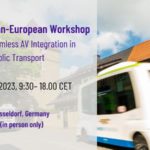
The Horizon 2020 research project SHOW project (SHared automation Operating models for Worldwide adoption) organised with great success the 4th Pan-European Workshop, titled “Shaping Seamless AV Integration in Public Transport”, which was held in Düsseldorf, on 12 October 2023. The workshop provided a dynamic exploration of cutting-edge advancements in automated shared mobility, along with a field trip to nearby Monheim am Rhein to experience the real-life AV service fully integrated into public transport. The workshop combines concise presentations by industry leaders, experts, and project participants, followed by interactive panel discussions that delve deep into the heart of each topic. 

The World Road Association – PIARC organised with great success two webinars which were held online on 5 and 15 September 2023, with the active support of NTUA. The topics of the Webinars were: Infrastructure, Tunnels, Speed, Data and Management, Behaviour, VRUs, Vehicles. The webinars provided solutions and recommendations to build road safety expertise in all countries with focus on Low and Middle Income Countries, in order to adopt effectively the Safe System Approach and reduce fatal and serious crashes on road network.  NTUA actively contributed with the following presentation:
NTUA actively contributed with the following presentation:

Dimitrios Nikolaou, NTUA PhD Candidate & Researcher, received the Young Researcher Best Paper on Road Safety Αward 2023 during the International Congress on Transport Research 2023. The Award is granted jointly by the Hellenic Institute of Transport (HIT/CERTH) and the Hellenic Institute of Transportation Engineers (HITE). The award concerned the paper is titled: “Spatial analysis of telematics surrogate safety measures across road environments”, co-authored by Armira Kontaxi, Apostolos Ziakopoulos and George Yannis. 
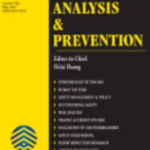
A paper titled “Real-Time Monitoring of Driver Distraction: State-of-the-art and future insights” authored by Eva Michelaraki, Chistos Katrakazas, Susanne Kaiser, Tom Brijs and George Yannis, has been published in Accident Analysis & Prevention. The aim of this research is to critically review and assess the state-of-the-art systems and platforms measuring driver distraction or inattention. The results indicated that real-time eye tracking systems, cardiac sensors on steering wheels, smartphone applications and cameras were the most frequent devices to monitor and detect driver distraction. On the other hand, less frequent and effective approaches included electrodes, hand magnetic rings and glasses. 
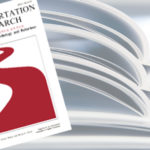
A paper titled “Star rating of driver’s behavior as a tool to prevent risky behavior” authored by Milan Tešić, Suzana Miladić-Tešić, Katerina Folla, George Yannis and Oscar Oviedo-Trespalacios has been published in Transportation Research Part F: Traffic Psychology and Behaviour. Results were analysed regarding the following aspects: 1) star rating of driver’s behavior and 2) defining the stages of the periodic factors monitoring for each Police Administration Unit (PAU) examined. It was revelated that using a mobile phone while driving, not using child restraints system, alcohol drunk driving during the night and seat belt use at rear seats of passenger vehicles were identified as the most significant factors associated with risky driving behaviors. 
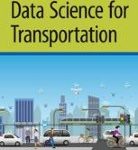
A paper titled “COVID-19 and driving behavior: Which were the most crucial influencing factors” authored by Marios Sekadakis, Christos Katrakazas, Eva Michelaraki, Apostolos Ziakopoulos and George Yannis, has been published in Data Science for Transportation. Based on the collected data, XGBoost feature analysis algorithms were deployed to obtain the most significant factors. Results revealed that COVID-19 new cases and new fatalities were the most significant factors related to COVID-19 metrics impacting driving behavior. In addition, the correlation between driving behavior with other factors (i.e., distance traveled, mobile use, driving requests, and driving during risky hours) was revealed. Lastly, the differences and similarities of the harsh event rates between the two lockdown periods were identified. 
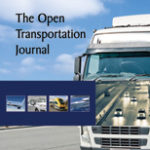
A paper titled “The impact of cognition-affecting neurological diseases on reaction time and driving speed deviation” authored by Athina Diamanti, Apostolos Ziakopoulos and George Yannis, has been published in Open Transportation Journal. Analysis of cognitive impairments based on GDS questions showed that frequent ‘feelings of boredom’ correlated with a 7% increase in reaction time and a 8% increase in the standard deviation of driving speed. Conversely, ‘feelings of worthlessness’ reduced the standard deviation of driving speed by 4.5%. Drivers with Alzheimer’s and Parkinson’s diseases showed higher reaction times, while drivers with depression and the control group showed lower reaction times. Drivers with Parkinson’s disease showed statistically fewer deviations of average speed. This research demonstrated that cognitively impaired individuals have larger reaction times and more erratic driving speeds. 



































































































































































